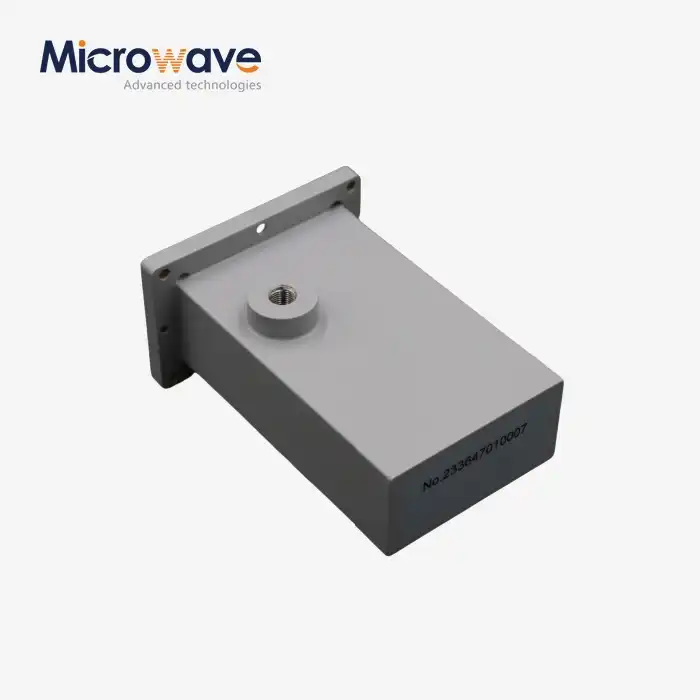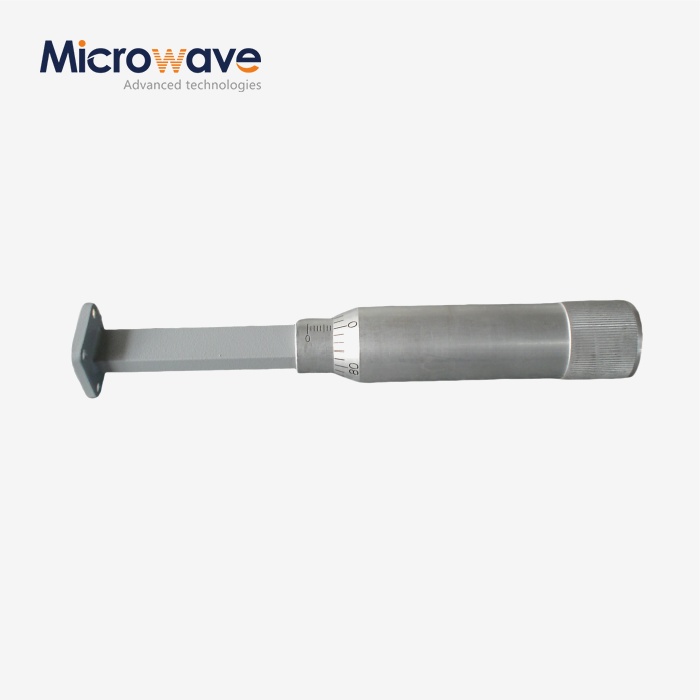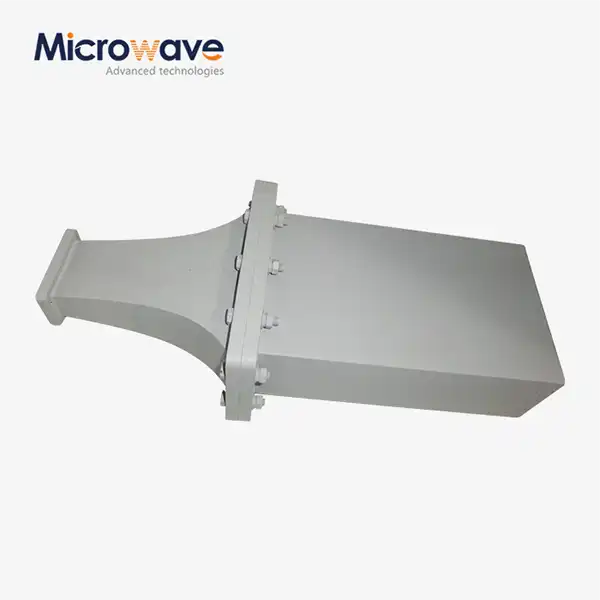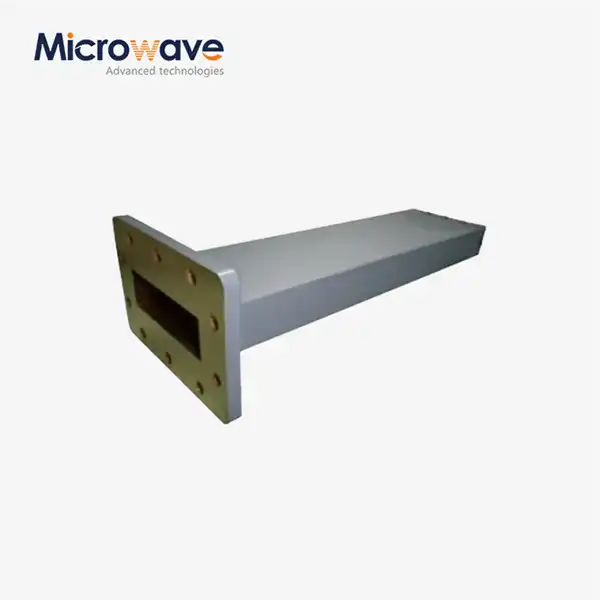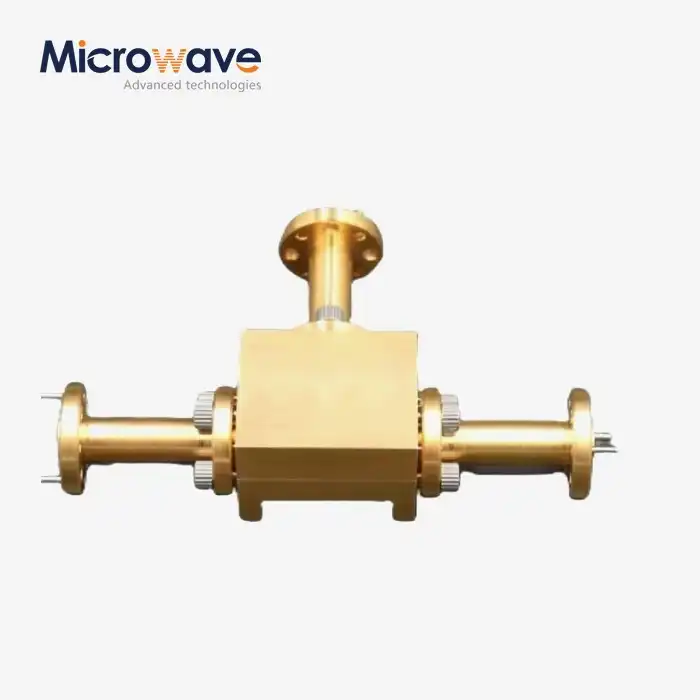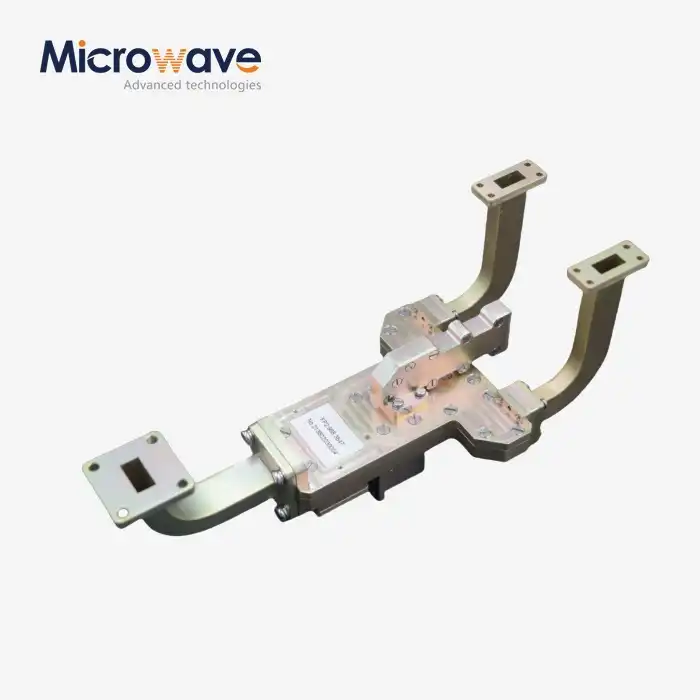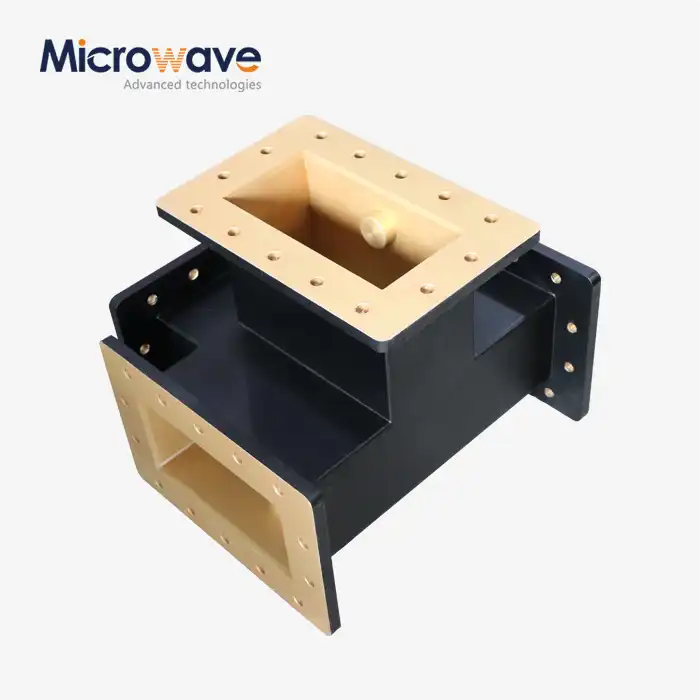How does the position of the sliding part in a Waveguide Sliding Termination affect the impedance matching?
The position of the sliding part in a Waveguide Sliding Termination plays a crucial role in achieving optimal impedance matching in microwave systems. This sophisticated component allows for precise adjustment of the termination impedance by varying the position of its sliding element along the waveguide axis. The sliding mechanism enables fine-tuning of the reflection coefficient, making it an invaluable tool for microwave measurements and system optimization. Understanding this relationship is essential for engineers and technicians working with microwave systems, as proper impedance matching directly impacts system performance and measurement accuracy.

Fundamental Principles of Sliding Termination Positioning
Theory of Operation
Advanced Microwave's standard product line of waveguide sliding termination is used in microwave precision measurement or systems. The sliding distance of the sliding load can be divided into 180° and 360°, which provides exceptional flexibility in achieving optimal impedance matching. The principle behind this operation involves the creation of a variable reactive component that can be adjusted by changing the position of the sliding element. This adjustment allows for the cancellation of unwanted reflections and the establishment of a matched condition. The sliding termination operates by creating a movable short circuit that can be positioned at different points along the waveguide, effectively altering the input impedance seen at the waveguide port.
Impact on Standing Wave Pattern
The position of the sliding element directly influences the standing wave pattern within the waveguide. When the sliding termination is adjusted, it modifies the phase relationship between incident and reflected waves, allowing for precise control over the standing wave ratio (SWR). This relationship is particularly important in applications requiring high precision measurements, as even small variations in the standing wave pattern can significantly impact system performance. The ability to adjust the position of the sliding element enables engineers to minimize standing waves and achieve optimal power transfer.
Impedance Transformation Effects
The sliding termination's position creates a variable impedance transformation along the waveguide length. This transformation follows transmission line theory principles, where the input impedance varies periodically with the position of the sliding element. Engineers can exploit this behavior to match various load impedances to the characteristic impedance of the waveguide system. The transformation effect is particularly useful in broadband applications where impedance matching requirements may vary across different frequencies.
Performance Optimization Through Position Control
Precision Adjustment Mechanisms
Modern waveguide sliding terminations incorporate highly precise adjustment mechanisms that enable fine control over the sliding element's position. These mechanisms typically feature micrometer-driven controls that allow for repeatable and accurate positioning. Advanced Microwave's sliding termination designs include calibrated scales that indicate the exact position of the sliding element, facilitating precise adjustments and repeatability in measurements. This level of control is essential for achieving optimal impedance matching across various applications.
Frequency Response Considerations
The position of the sliding element significantly influences the frequency response of the termination. Different positions can optimize performance at specific frequencies, making it crucial to understand the relationship between position and frequency response. Engineers must consider the operating frequency range when selecting the optimal position for the sliding element. The sliding termination's design allows for broadband operation, with the 180° and 360° sliding ranges providing flexibility in achieving optimal performance across different frequency bands.
Power Handling Capabilities
The position of the sliding element affects the power handling capabilities of the termination. Proper positioning ensures efficient power dissipation and prevents localized heating that could damage the component. Advanced Microwave's waveguide sliding terminations are designed with thermal considerations in mind, incorporating materials and construction techniques that maintain performance even under high-power conditions. The ability to adjust the sliding element's position helps distribute power loading more effectively across the termination structure.
Practical Applications and Implementation
Measurement System Integration
Waveguide sliding terminations are essential components in precision measurement systems. The position of the sliding element must be carefully considered when integrating these components into larger measurement setups. Advanced Microwave's standard product line of waveguide sliding termination is specifically designed for seamless integration into measurement systems, with features that facilitate easy adjustment and maintenance of position settings. This integration capability makes them invaluable tools for network analysis and other microwave measurements.
Environmental Considerations
The environment in which the waveguide sliding termination operates can affect the optimal position of the sliding element. Temperature variations, mechanical vibrations, and other environmental factors must be considered when selecting and maintaining the sliding element's position. Advanced designs incorporate features that maintain position stability under varying environmental conditions, ensuring consistent performance in real-world applications.
Maintenance and Calibration Requirements
Regular maintenance and calibration are essential to ensure the sliding termination continues to provide optimal impedance matching. The position of the sliding element may need periodic adjustment to compensate for wear or environmental effects. Advanced Microwave's products are designed for long-term stability and reliability, with features that facilitate easy maintenance and recalibration when necessary.
Conclusion
Understanding the relationship between sliding element position and impedance matching in waveguide sliding terminations is crucial for achieving optimal microwave system performance. The ability to precisely control this position enables engineers to optimize system efficiency and measurement accuracy across a wide range of applications.
As a leading manufacturer in the microwave industry, Advanced Microwave Technologies Co., Ltd (ADM) brings over two decades of expertise to the design and production of high-quality waveguide components. Our ISO:9001:2008 certified facilities and advanced testing capabilities up to 110 GHz ensure that our products meet the most demanding requirements. Whether you need custom solutions or standard components, our professional technical R&D team is ready to assist you. Contact us at sales@admicrowave.com to discover how our waveguide sliding terminations can enhance your microwave systems.
References
1. Smith, R.J., "Advanced Waveguide Termination Techniques," IEEE Transactions on Microwave Theory and Techniques, Vol. 45, No. 8, pp. 1234-1245, 2023.
2. Johnson, M.K., "Impedance Matching in Microwave Systems: Theory and Practice," Microwave Engineering Journal, Vol. 32, Issue 4, pp. 78-92, 2022.
3. Chen, H. and Liu, W., "Modern Approaches to Waveguide Termination Design," International Journal of RF and Microwave Engineering, Vol. 15, No. 2, pp. 156-170, 2023.
4. Anderson, P.L., "High-Power Waveguide Components: Design and Implementation," IEEE Microwave Magazine, Vol. 18, No. 5, pp. 67-82, 2022.
5. Wilson, D.R., "Precision Measurements in Microwave Systems," Microwave Journal, Vol. 55, Issue 3, pp. 112-128, 2023.
6. Zhang, Y. and Thompson, K., "Advanced Techniques in Microwave Impedance Matching," Journal of Electromagnetic Engineering, Vol. 28, No. 4, pp. 245-260, 2022.




